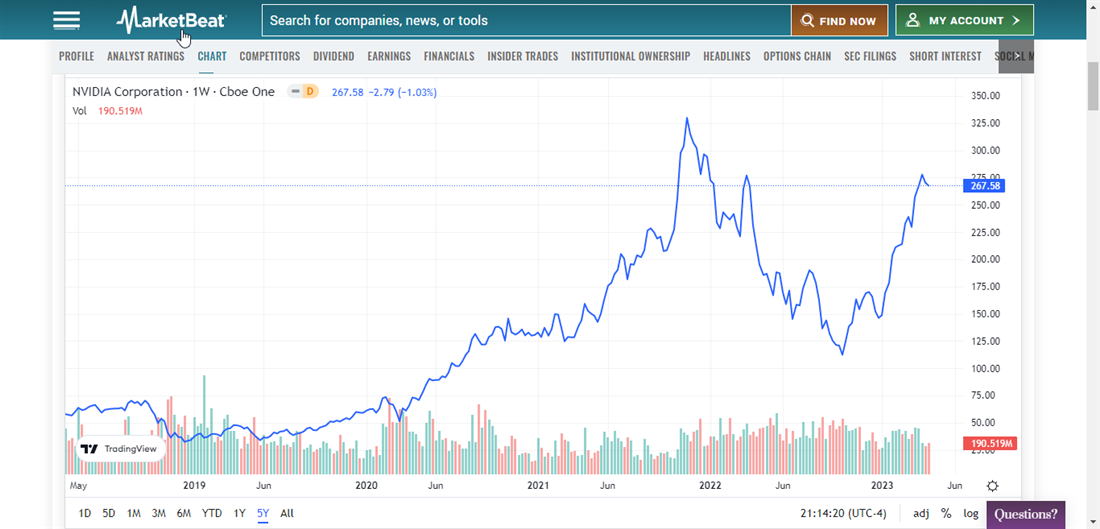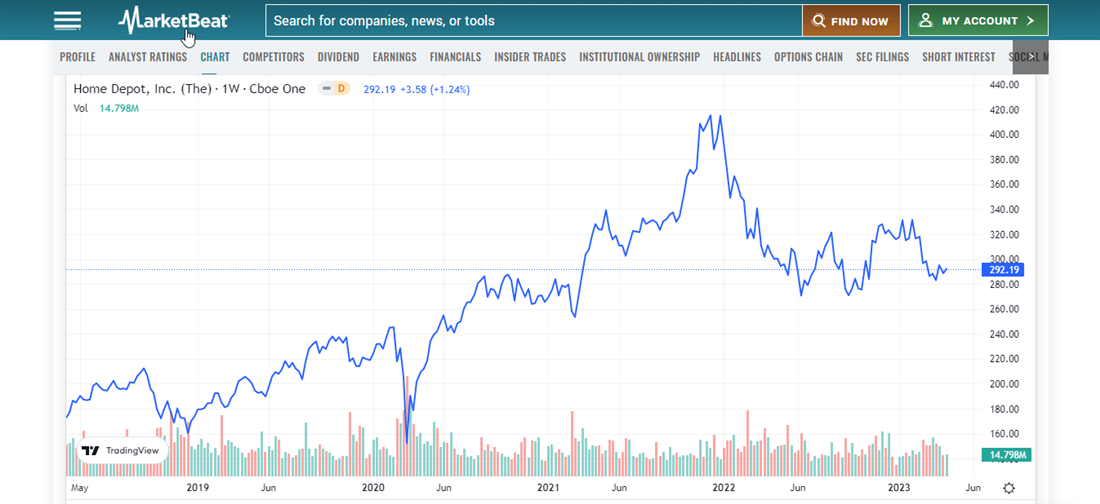Want to learn about growth vs value investing? You've landed on the right page! This article will review the differences between growth and value stocks and discuss which market environments are best for each.
Growth and value may seem at odds initially, but both play an important role in portfolio construction.
Growth vs Value: What Are the Differences?
What is value vs growth investing?
Growth vs. value investing is arguably the biggest rivalry in modern markets. We're talking Yankees vs. Red Sox, Foreman vs. Ali or Elon Musk vs. the SEC. Growth and value have legions of proponents who will fiercely argue the benefits of each investing style over the other. And then some investors are more down the middle, arguing for value or growth depending on the market environment.
As with most debates, the truth likely lies somewhere in the middle. But growth can still outperform value for extended periods or vice versa. Learning the pros and cons of both styles (and when each one is appropriate) is an essential step in becoming a versatile investor. Rigid dogma is often the fast track to underperformance. But for now, let's dig deeper into the meaning of a growth stock vs value stock.

Definition of Growth Investing
Saying that growth investing is all about short-term profits is a misnomer — ask anyone who's spent the last 20 years invested in Apple Inc. (NASDAQ: AAPL) or Amazon Inc. (NASDAQ: AMZN) if short time frames were the only path to success.
The definition of growth investing varies depending on your source. For example, in a recent growth investing vs value investing analysis, Charles Schwab defined growth stocks as companies with five-year average sales growth over 15%. In contrast, value stocks were defined as companies with a price-to-sales rate under 1. But this is just one sample of definitions and growth investing is more about mindset and risk tolerance than fitting rigid criteria.
Growth companies are expected to outperform, so investors don't mind paying a premium to own their stocks. Growth stocks usually look expensive through valuation metrics like the price-to-earnings (P/E) ratio or price-to-book (P/B) ratio because growth investors typically care more about potential sales than current sales. These companies usually reside in volatile sectors like tech or biotech and rarely pay dividends since profits go directly back into the firm. Growth investors should be prepared for volatility since these companies frequently suffer ups and downs as they push new products and innovations to the market.
Definition of Value Investing
Value investing has many famous proponents, like Benjamin Graham, Warren Buffett and Jeremy Grantham. And while value investors are also looking to beat the market average, they approach stocks differently than growth investors. Unlike growth investors, who don't mind paying for pricey valuations, value investors shop in the discount aisle.
Graham is arguably the father of value investing. He coined the term "margin of safety" to describe his investment criteria, which modern investors like Warren Buffett have embraced. One of Buffett's favorite analogies about margin of safety was about building a bridge. If the heaviest truck using the bridge weighs 10,000 pounds, build a bridge that can withstand 30,000 pounds.
One of the key differences between value investing vs growth investing is that value investors won't overpay for innovative companies or exciting new technology. Value investors look for stocks underpriced by fundamental metrics like P/E ratio, price-to-sales (P/S) ratio or price-to-cash flow (P/CF) ratio.
Adopting a value investing mentality means looking for cheap stocks according to traditional valuation metrics. Often, this means buying downtrodden or less exciting stocks like banks, industrials or other dividend-paying companies. Value investors aren't looking for the next big thing, just good companies at fair prices.
Examples of Growth Investing Companies
When choosing between growth or value stocks, you'll need to determine your investment goals and criteria. Are you looking to pick the best individual growth stocks or want to invest in growth stock funds like the SPDR Portfolio S&P 500 Growth ETF (NYSE: SPYG)? Growth ETFs can even have themes, like the Vanguard S&P Small Cap 600 Growth ETF (NYSE: VIOG).
Looking for some specific examples? Here are three companies in different industries that fit the growth stock mold.
NVIDIA Corp.
You'd be hard-pressed to find a more discussed growth stock over the last few years than chipmaker NVIDIA Corp. (NASDAQ: NVDA). The company pays minimal dividends and has a sky-high P/E ratio, but its microchips and AI advances have made it one of the tech sector's darlings. NVIDIA has been a public company for decades, but sales growth has exploded over the last few years.

HealthStream Inc.
HealthStream Inc. (NASDAQ: HSTM) is a mid-cap healthcare staffing solutions company offering training, credentialing and scheduling for medical professionals and data and administrative systems for healthcare providers.
What makes it a growth stock? Despite a P/E ratio over 70 and a minimal dividend yield, HealthStream has increased profits for five consecutive years, and current projections indicate an earnings increase of 15% in 2023.
The Trade Desk Inc.
The priciest stock on our list belongs to The Trade Desk Inc. (NASDAQ: TTD), with a P/E ratio north of 600. But unlike most stocks with a P/E ratio that high, The Trade Desk has a market cap close to $30 billion and a history of providing solutions to advertising clients. The company's projected earnings growth for 2023 is over 63%, and profits have grown substantially, including a boost from $974 million to $1.3 billion in the last year alone.
Examples of Value Investing Companies
Value stocks also have plenty of ETFs and index funds offering exposure to different market sections, depending on certain criteria. Broad index funds like the Schwab U.S. Large Cap Value ETF (NYSE: SCHV) hold big, recognizable companies with good underlying fundamentals. Or you can go the thematic route, like the Vanguard Russell 1000 Value Index (NYSE: VONV), which tracks small and mid-cap value stocks, or the iShares MSCI International Value Factor ETF (NYSE: IVLU), which tracks undervalued stocks outside the United States.
Here are three different stocks that currently fall into the value category based on their fundamentals. Note that many former growth stocks entered value territory following the 2022 bear market (which is a good example of why investors benefit from adopting fluid strategies).
Walmart Inc.
Can the world's largest retailer really be undervalued? By lots of fundamental metrics, yes! Walmart Inc. (NYSE: WMT) generates more revenue and employs more people than any company but trades at a relatively fair valuation. The stock pays a good dividend, and its P/S ratio is under 1, meaning the company produces more than $1 in revenue for every $1 in equity provided by investors.
The Home Depot Inc.
One non-tech stock hit hard in 2022 was The Home Depot Inc. (NYSE: HD), dropping over 30% from its 2021 highs. Check out its most recent earnings. But value investors will like what they see now thanks to a P/E ratio under 20, beta under 1 and history of dividend payment increases. Home Depot is a good example of a company that became a value stock due to factors outside its control.
 Bank of America Corp.
Bank of America Corp.
You can often find Bank of America Corp. (NYSE: BAC) value in the banking sector, and many financial stocks were hit hard following the collapse of Silicon Valley Bank in early 2023. When events like a banking crisis drag entire sectors down, you can often find deals, and Bank of America fits that bill. The stock has a P/E ratio under 10, a P/B rate under 1 and pays a sustainable dividend.
Pros and Cons of Growth vs. Value Investing
Deciding between growth or value stocks? Here are some pros and cons of each investing style.
Pros of Growth Investing
Take a look at the benefits of growth investing:
- Outperformance: It's been a good decade to be a growth investor. Following the end of the financial crisis, growth stocks have consistently outperformed value. Past performance is no barometer of future performance, but the decade between 2011 and 2021 was not kind to value investors.
- Exciting new trends: Growth stocks often bring new products or innovations to the market and are frequently priced at a premium.
- Beating the market: When the economy is going well and markets rise, the top growth stocks are often the cream of the crop. A good example is the FAANG basket of stocks, which outperformed the S&P 500 substantially from 2012 to 2022.
Cons of Growth Investing
The cons of growth investing include the following:
- Expensive valuations: Investors pay for the privilege of growth investing. Growth companies often don't have earnings to match their market cap, so P/E and P/S rates are high.
- High volatility: Growth also comes with risk as these companies carry high beta stocks that fluctuate more than the overall market. If you can't stomach volatility, growth investing will be difficult.
- Often suffer in rising rate environments: When rates rise, companies that don't have profits matching their valuation can find capital harder to come by, significantly damaging undercapitalized tech firms that may see stricter terms from lenders.
Pros of Value Investing
Now, the benefits of value investing:
- Established companies: Value stocks are often older companies that have experienced short-term stagnation, driving their value below where it should be. This allows value investors to buy cheap shares before the market reverses.
- Low beta: Value stocks aren't as volatile as growth stocks, offering investors more stability and predictability.
- Usually dividend payers: Value stocks can also provide income to investors from dividends since they aren't concerned about reinvesting excess profits into research and development.
Cons of Value Investing
The downsides of value investing include the following:
- Underperform in bull markets: Value stocks are great to own when bear markets strike, but when market conditions improve, so do growth stocks' prospects. Value stocks often underperform growth stocks in bull markets.
- Value traps: Not every stock with a low P/E ratio or high dividend yield is a value stock. Stocks are sometimes cheap for a reason, and a company with questionable accounting or C-suite controversies may not provide actual value in the future. Value investing requires more due diligence than just memorizing a few ratios.
How Growth and Value Overlap
Growth vs value stocks may seem like two distinct groups, but these companies can sometimes overlap. For example, some former growth stocks like Meta Platforms Inc. (NASDAQ: META) have gone from high-flying tech winners to fundamentally undervalued by many metrics.
Looking through the holdings of many growth vs. value stock ETFs, you'll notice plenty of similar stocks. Each fund uses its own definition of growth or value, and many times, a stock fits value in one fund and then growth in another. The distinctions can be minimal, so investors should have their basic groundwork on growth vs value stock.
Investing in Growth and Value
Growth stocks and value stocks have a place in your portfolio. For example, an investor seeking a diverse portfolio might give 65% weight to growth and 35% to value during bull markets or declining rate environments. If inflation grows and rates go up to combat it (like in 2022), an allocation revision to 35% growth and 65% value might be more beneficial. Use your investing goals and risk tolerance to compare stocks and build your ideal portfolio.
Two Paths to Potential Outperformance
Hopefully, now you'll be able to answer if someone asks about your preferred investment style, growth or value. While these may seem like competing philosophies (and in many ways, they are), both can have a place in your portfolio depending on current events or the market environment. Always be flexible in your investment beliefs that you can pivot when new information deems it appropriate. Growth and value can both work in certain situations.
FAQs
Here are a few commonly asked questions regarding the growth vs value debate:
Are value funds better than growth funds?
Value funds tend to have lower expenses than growth funds, which can lead to better performance over time. However, each fund is different, and you should always research the holdings before buying.
Is value investing riskier than growth?
From a volatility standpoint, growth stocks are riskier than value stocks, since they frequently have larger drawdowns. However, they also tend to outperform in bull markets.
Are value or growth funds better for the long term?
Investment style growth vs value long-term results will vary depending on market conditions and investor risk tolerance. For example, small-cap growth stocks may have better returns, but large-cap value stocks can provide consistent income through dividends.













